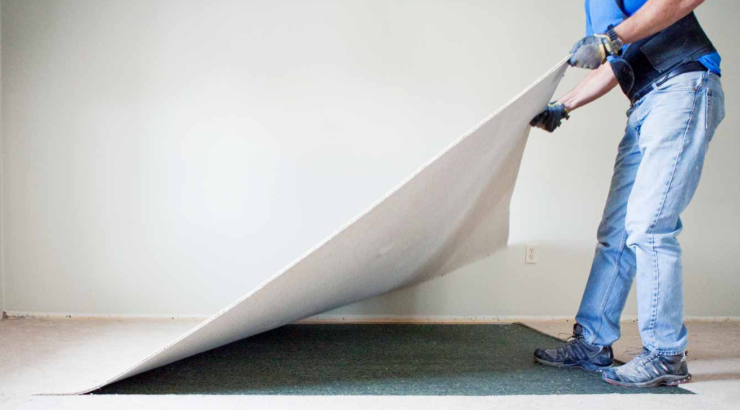Affordable Driveway Border Ideas to Boost Curb Appeal
Create a Stylish Driveway Edge Without Overspending Want to enhance your home's exterior without a full-scale renovation? Adding a driveway...

Removing carpet yourself is a great way to save money on a renovation. Whether you're preparing to install hardwood, tile, or just want a fresh look, this step-by-step guide will walk you through how to remove carpet like a pro — even if you're new to DIY projects.
Hiring a contractor to remove carpet can cost between $1–$5 per square foot, depending on:
• The type of installation (tack strips vs. glue)
• Location (stairs cost more)
• Condition (presence of mold, moisture, or adhesives)
Doing it yourself can cut those costs significantly — most homeowners spend under $100 on tools and supplies.
Before you begin, gather these essentials:
• Utility knife
• Pry bar
• Hammer
• Locking pliers
• Work gloves
• Dust mask & safety goggles
• Knee pads
• Flathead screwdriver
• Duct tape
• Heavy-duty trash bags
• Ring shank nails (if reinforcing subfloor)
Choose a corner of the room. Use pliers to pull the carpet edge up and away from the wall. If it’s stubborn, cut a small square with a utility knife to get a grip.
If you find hardwood underneath:
Score the carpet carefully about 1" from the wall along the tack strip to avoid damaging the wood.
Cut the carpet into 3-foot-wide strips for easier handling. Roll each section tightly and secure with duct tape.
Pro Tip: Smaller strips are easier to carry, fit better in trash bins, and reduce strain on your back.
Once the carpet is up, remove the padding beneath. Most padding is stapled in sections and tears easily.
Roll up each section, tape it shut, and set it aside for disposal. Wear gloves — carpet staples can be sharp and hard to see.
If you're installing new carpet, you can usually reuse old tack strips if they’re in good condition. If not:
• Slide your pry bar under the tack strip near a nail
• Protect your subfloor with a folded towel under the pry bar
• Tap gently with your hammer and pry upward
For concrete floors: Tack strips are nailed in with concrete nails. If you can’t pull them, use an angle grinder to cut them flush with the floor.
Once everything is up, check the subfloor thoroughly:
• Rust stains or musty smells: Could indicate water damage or pet accidents
• Squeaky boards: Nail down with ring shank nails
• Sagging areas: May signal structural issues — consider a professional inspection
• Leftover staples: Remove with pliers or a flathead screwdriver
Your floor is now ready for new materials — whether you’re laying tile, laminate, vinyl, or refinishing hardwood.
Removing carpet from stairs is trickier but totally doable.
How-To:
1. Start at the top step and cut near the risers
2. Remove any metal nosing if present
3. Pull the carpet free from the tread and risers
4. Cut sections as you go to make them easier to handle
5. Watch for and collect staples to avoid injury
If stairs have banisters or tricky corners, make smaller cuts and take your time.
Glued-down carpet, especially on concrete, is tougher to remove.
• Use a floor scraper to lift the carpet and remove adhesive
• For stubborn glue, apply an adhesive remover and scrape again
• Always wear a respirator when working with chemical solvents
Instead of tossing your old carpet in the trash, consider these eco-friendly disposal ideas:
• Rent a dumpster for large-scale disposal
• Recycle through the Carpet America Recovery Effort (CARE)
• Donate clean carpet to local animal shelters
• Repurpose into area rugs or utility mats
• Call a junk removal service for hassle-free pickup
• Always wear gloves, goggles, and a dust mask
• Be careful when cutting carpet to avoid injury
• Tape all rolled sections to keep your workspace tidy
• Check your local city guidelines for carpet disposal
Whether you're prepping for hardwood, tile, or just decluttering, removing carpet yourself is a rewarding and cost-effective project. With a weekend of work and some basic tools, you'll have a clean surface ready for a brand-new look.
Removing carpet yourself is a great way to save money on a renovation. Whether you're preparing to install hardwood, tile, or just want a fresh look, this step-by-step guide will walk you through how to remove carpet like a pro — even if you're new to DIY projects.
Post Your Comments